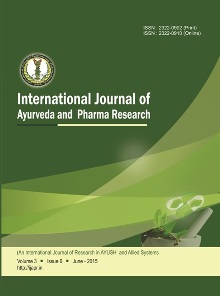Ethnomedicinal Overview of Sesamum Indicum (Tila) as Described in the Brihatrayees
Abstract
Sesamum indicum (Tila) is a revered oilseed plant extensively used in the Ayurvedic system of medicine since ancient times. Its reference dates back to the Vedic era, where it was commonly used in sacrificial rituals, religious offerings, and as a dietary and therapeutic substance. Classical Ayurvedic literature, as well as other ancient Indian texts, have documented the medicinal applications of Tila for a variety of human health conditions. The present review aims to compile the therapeutic uses of this significant medicinal plant as described in the Brihatrayee-the three foundational texts of Ayurveda: Caraka Samhita, Sushruta Samhita, and Ashtanga Hridaya. The study reveals that various parts of Sesamum indicum, especially its oil (Tila tailam), seeds, and paste, are frequently mentioned for their health-promoting properties. These include applications in skin care, wound healing, strengthening of bones and teeth, enhancing vitality, and managing disorders of Vata and Pitta doshas. The review underscores a substantial potential for further pharmacological and clinical research to validate and integrate these classical uses into contemporary Ayurvedic practice.

Copyright (c) 2025 International Journal of Ayurveda and Pharma Research

This work is licensed under a Creative Commons Attribution-NonCommercial-ShareAlike 4.0 International License.


